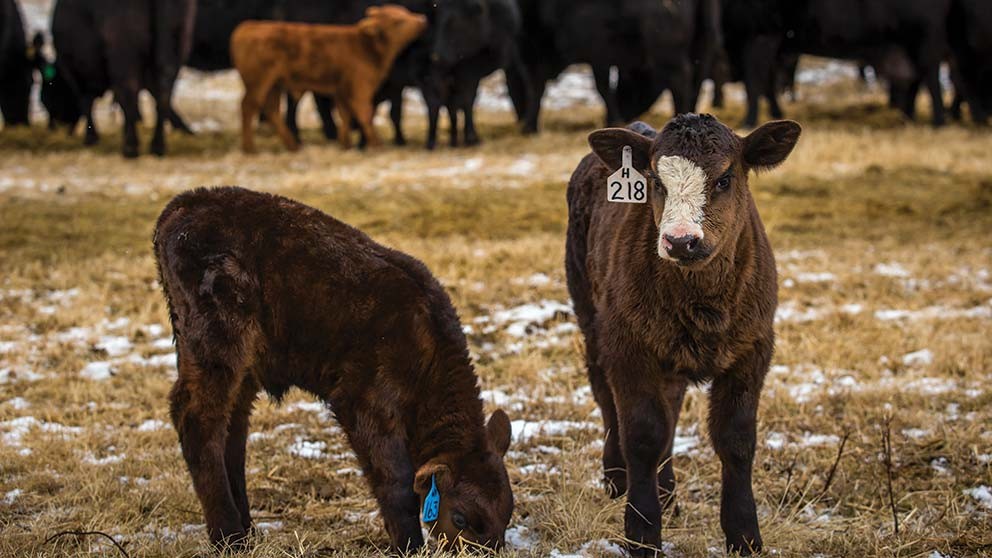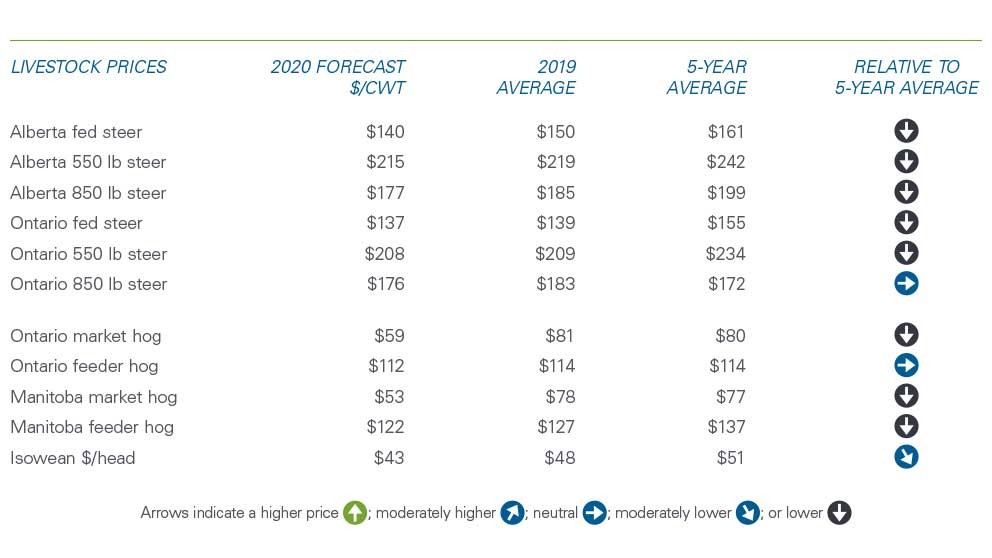Livestock Profitability Tied to North American Processing Capacity

There was optimism in the red meat sector at the beginning of 2020. Cattle and hog prices were tracking higher than 2019
by Leigh Anderson – Farm Credit Canada (FCC)
The outbreak of COVID-19 severely strained the red meat supply chain due to major reductions in slaughters across North America. That considerably changed our outlook for livestock prices in 2020 (Table 1).
Table 1. Average livestock prices for 2020 projected down
“The longer plants remain idled and operate below capacity, the longer it takes for prices to recover.”
Projecting prices in the current highly-uncertain environment is difficult. But the early-year trends and futures markets are helpful inputs. Western Canadian fed steer prices have dropped 30% since the beginning of the year, with most of the decline occurring in the last 4 weeks. In Eastern Canada, market hogs have declined 25%. Cattle and hog prices will likely be under pressure for the remainder of 2020.
Profitability is projected to be negative. Lower feed prices and a lower Canadian dollar will help support margins but will not offset losses currently projected for the year.
A recovery in slaughter numbers will be necessary for prices to rebound. It will take some time for processors to work through the supply of livestock ready for slaughter. The longer plants remain idled and operate below capacity, the longer it takes for prices to recover. The AgriRecovery set-aside program will help producers hold cattle longer when processing capacity is constrained.
Factors to monitor amid challenges in meat processing plants
1. Lower supply of red meatInventories of frozen red meat are overall above historical averages. But how long supply remains adequate also depends on consumer behaviour. Beef and pork cut-out values have increased with beef reaching record daily highs lately. We’re likely to see a shift in the types of meat consumed, an increased amount of ground meat moving to the market, and tighter availability for high-end cuts that would normally go to the restaurant or foodservices industry (including veal cuts).
2. Livestock supply trends could shiftReduced slaughter capacity means cattle will be kept on feed longer including cull cows and feeders ready for market. This will require rebalancing feed rations to maintenance diets to slow their growth and extend feed supplies, pasture time and the time calves take to get to feeder weight. Revisiting marketing plans for later in the year, perhaps beyond the fall calf run, may be necessary as it will likely take several months for processors to clear the backlog. Overall cattle numbers could increase if producers retain cows and heifers which lead to more calves in 2021.
A different trend could emerge for the hog sector. We expect reduced North American hog numbers in the second half of 2020 as hog operations cull the sow breeding herd and reduce weanlings in the coming months to better match slaughter capacity. As a result, hog supplies could trend lower by the end of the year and for 2021.
3. Red meat protein demand will be weakerThe COVID-19 global recession will weaken global demand for red meat, especially in emerging markets. Good news is that ASF and the lower hog numbers in China continue to back a strong import demand for pork globally. China’s pork imports tripled in March year-over-year.
Bottom lineLivestock operations should expect negative margins until processing capacity and slaughter numbers across North America return towards normalcy. The COVID-19 economic crisis is causing significant financial stress. Building resiliency in these challenging times is hard. Our blog will offer guidance on financial risk management next week. You can also access FCC’s Rooted in Strength for mental health resources available to support you.
Leigh Anderson joined FCC in 2015 as a Senior Agricultural Economist, specializing in monitoring and analyzing FCC’s portfolio, industry health, and providing industry risk analysis. Prior to FCC, he worked in the policy branch of the Saskatchewan Ministry of Agriculture. He holds a Master of Agricultural Economics degree from the University of Saskatchewan.













